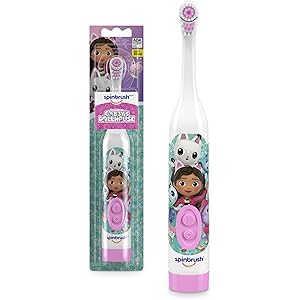Huggies Size 1 Diapers, Snug & Dry Newborn Diapers, Size 1 (8-14 lbs), 128 Count, Packaging May Vary
$19.97 (as of October 25, 2025 00:05 GMT +00:00 - More infoProduct prices and availability are accurate as of the date/time indicated and are subject to change. Any price and availability information displayed on [relevant Amazon Site(s), as applicable] at the time of purchase will apply to the purchase of this product.)Understanding Labor and Delivery Options
When expecting a baby, understanding labor and delivery options is crucial for parents-to-be. This knowledge empowers them to make informed decisions about the birthing process. Various methods and settings are available, each with its own benefits and considerations. From home births to hospital deliveries, the choices can significantly impact the experience of childbirth.
Types of Labor
Labor can be categorized into several types, including spontaneous labor, induced labor, and augmented labor. Spontaneous labor occurs naturally when the body is ready, while induced labor is initiated through medical interventions, often due to health concerns for the mother or baby. Augmented labor refers to the enhancement of spontaneous labor using medications or procedures to increase contractions. Understanding these types helps expectant parents prepare for what to expect during the birthing process.
Delivery Settings
Choosing the right delivery setting is a vital aspect of understanding labor and delivery options. Common settings include hospitals, birthing centers, and home births. Hospitals provide access to advanced medical care and pain relief options, while birthing centers offer a more homelike environment with midwives. Home births can be a comfortable choice for those seeking a natural experience, but they require careful planning and consideration of potential risks. Each setting has its pros and cons, making it essential for parents to evaluate their preferences and needs.
Pain Management Techniques
Pain management during labor is a significant concern for many expectant mothers. Various techniques are available, ranging from natural methods like breathing exercises and hydrotherapy to medical interventions such as epidurals and narcotics. Understanding labor and delivery options includes exploring these pain relief methods to find what aligns best with individual comfort levels and birthing plans. Discussing these options with healthcare providers can help in making the best choice for a positive birth experience.
Support During Labor
Having support during labor can greatly influence the experience and outcome of childbirth. This support can come from partners, family members, doulas, or midwives. Understanding labor and delivery options also involves recognizing the importance of emotional and physical support during this time. Continuous support has been shown to reduce anxiety, enhance satisfaction with the birth experience, and even shorten labor. Parents should consider who they want by their side and how they can best support each other during this transformative process.
Medical Interventions
Medical interventions during labor and delivery can include procedures such as cesarean sections, forceps delivery, and vacuum extraction. While these interventions can be necessary for the health and safety of the mother and baby, understanding labor and delivery options means being aware of when these interventions may be recommended. Parents should discuss potential scenarios with their healthcare providers to understand the reasons behind these interventions and how they can impact the birthing experience.
Postpartum Care
Postpartum care is an essential aspect of the labor and delivery process that is often overlooked. Understanding labor and delivery options should also encompass the care and support needed after the baby arrives. This includes physical recovery for the mother, emotional support, and establishing feeding routines for the newborn. Parents should be informed about the resources available to them, such as lactation consultants and postpartum support groups, to ensure a smooth transition into parenthood.
Birth Plans
Creating a birth plan is a helpful way for expectant parents to communicate their preferences regarding labor and delivery. This document outlines choices for pain management, support people, and specific requests for the birthing environment. While flexibility is essential, having a birth plan can guide healthcare providers in understanding the parents’ wishes. Understanding labor and delivery options allows parents to articulate their desires and advocate for themselves during the birthing process.
Informed Consent
Informed consent is a critical component of understanding labor and delivery options. It involves discussing potential risks, benefits, and alternatives to various procedures and interventions with healthcare providers. Expectant parents should feel empowered to ask questions and seek clarification on any aspect of their care. This dialogue ensures that they are making informed decisions that align with their values and preferences, ultimately leading to a more satisfying birth experience.
Resources for Expecting Parents
Numerous resources are available to help expecting parents navigate the complexities of labor and delivery options. Books, online forums, and childbirth education classes can provide valuable information and support. Additionally, consulting with healthcare providers and experienced parents can offer insights into the realities of childbirth. By utilizing these resources, parents can feel more prepared and confident as they approach the labor and delivery process.



